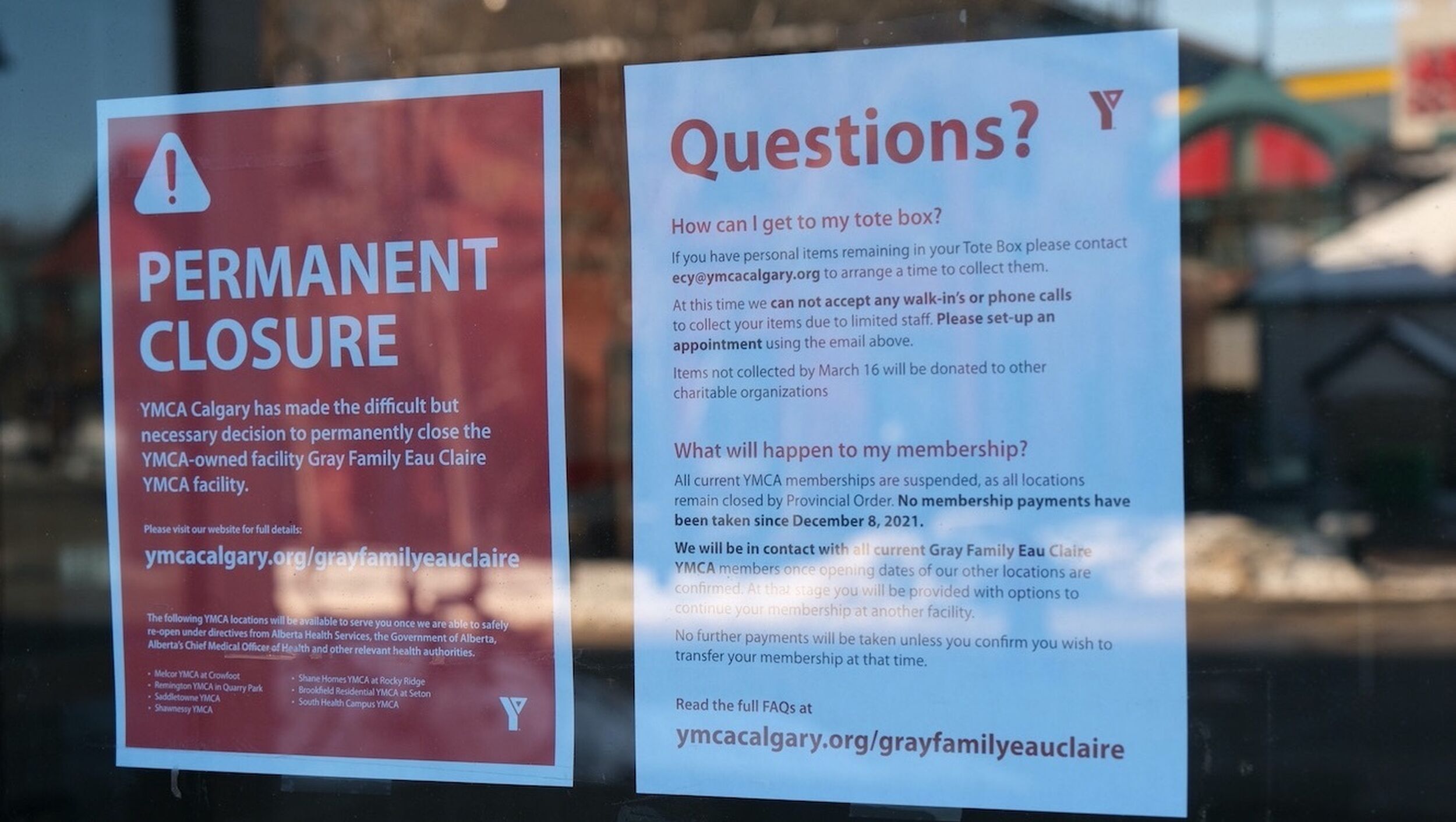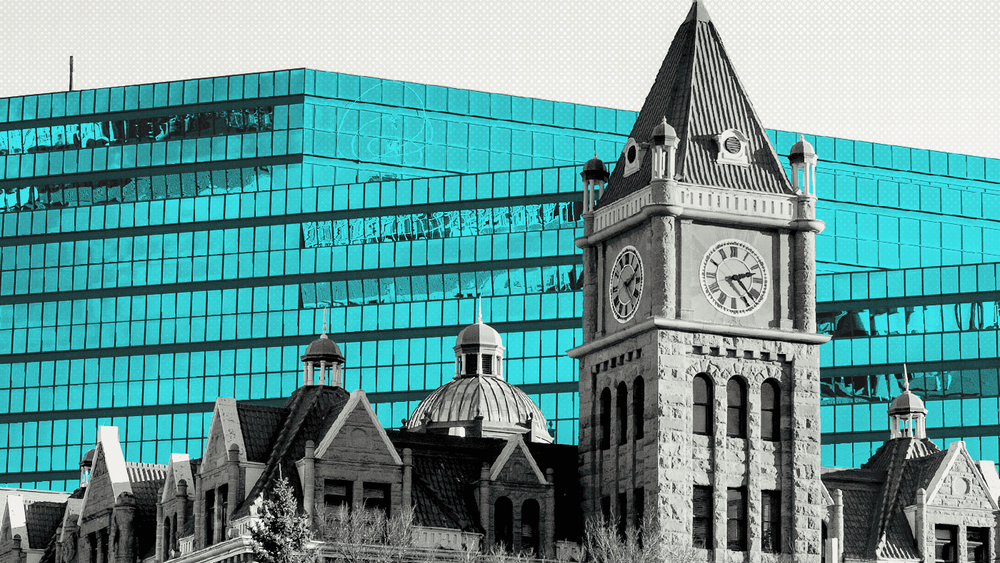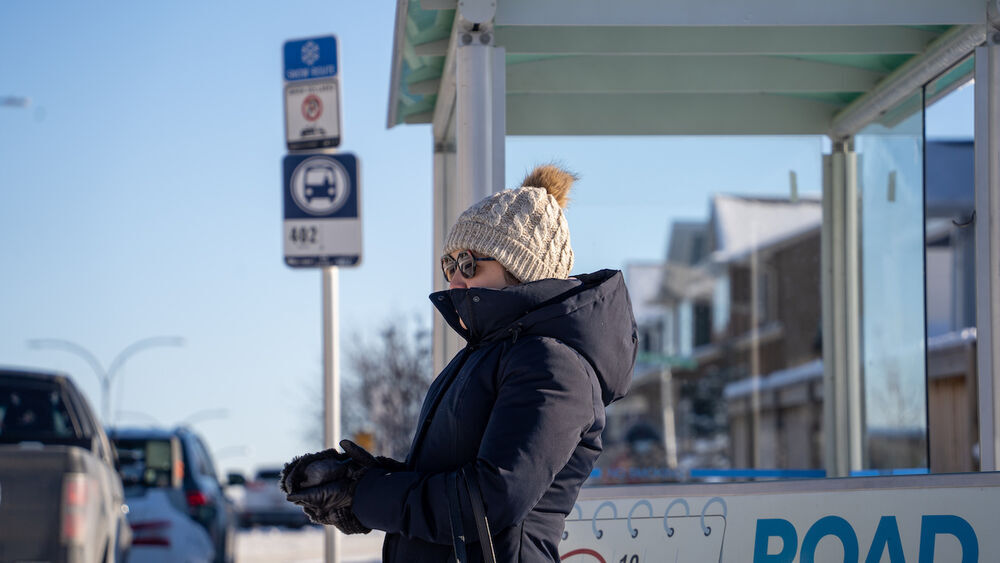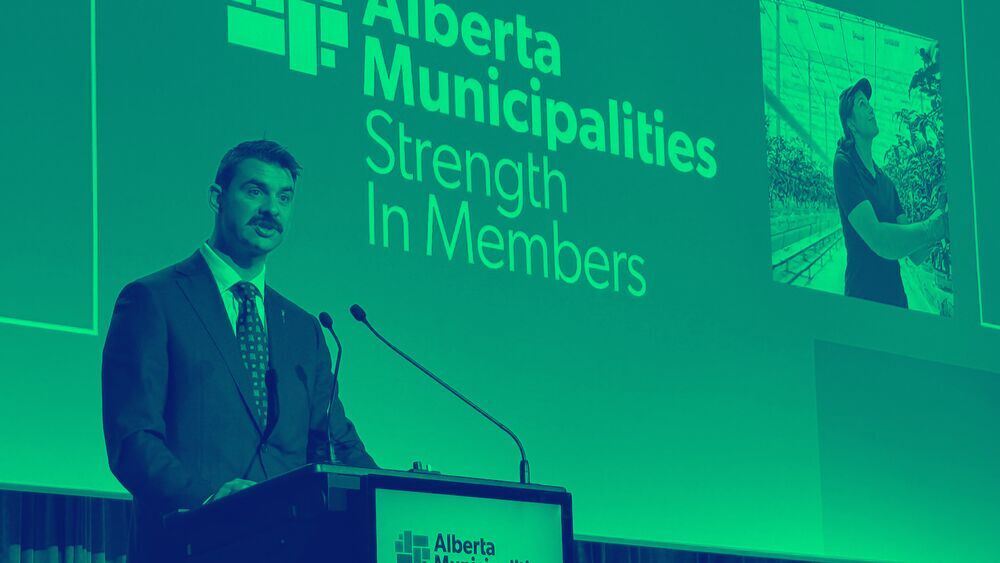
No more Eau Claire YMCA. Photo: Dave Robinson
With YMCA closure, city lets down inner-city Calgarians
You’re expected to hop in your car to exercise.
Support independent Calgary journalism!
Sign Me Up!The Sprawl connects Calgarians with their city through in-depth, curiosity-driven journalism. But we can't do it alone. If you value our work, support The Sprawl so we can keep digging into municipal issues in Calgary!
In the last decade, Calgary communities closest to the downtown core have been touted as the best neighbourhoods to live. Amenities in walking distance are part of the lure. But choosing the inner city comes with trade-offs: smaller spaces where it can be difficult to accommodate a growing family, large pets or some hobbies.
But sometimes, those priorities are at odds.
Last Thursday, I got an email from Shannon Doram, the CEO of YMCA Calgary, announcing the permanent closure of the Gray Family YMCA at Eau Claire—the Y whose swimming pool I looked forward to returning to when COVID-19 restrictions eased.
The email cited a decline in membership and the rising costs to maintain the 30-year-old building as the reasons for closing the facility permanently.
As a city, we’ve focused our energy on building new… and we’ve neglected what we already have.
YMCA Calgary operates eight recreational facilities in the city, but the only building owned by the organization is the one at Eau Claire. The City of Calgary owns the state-of-the-art facilities serving suburban communities on the edges of the city—including the world’s largest YMCA in Seton, which cost Calgarians just under $190 million.
These megaplexes are built to fulfill the needs and preferences of the growing suburban population.
“I supported the Seton Y and the Genesis Centre because I believe that every Calgarian should have access to amenities,” said Ward 7 Councillor Druh Farrell. “But it shouldn't be at the expense of another. That's what's been happening.”
“If by opening these other facilities, we have to close the ones in areas [where] we are encouraging more density—it goes completely against what we say we want,” said Farrell, who announced this week that she won't be running for re-election in October.
Calgary’s struggling downtown
Since the downturn hit Calgary in 2014, thousands of jobs have been lost and today nearly 30% of Calgary’s downtown office space sits empty.
The population in and around the city’s core has continued to grow, but the appeal of inner-city living is slowly disappearing—and in the last year the pandemic accelerated the loss of cherished businesses and amenities.
The decline of downtown employment has resulted in permanent losses for those of us who’ve chosen to live in the inner city.
The Eau Claire YMCA is the latest casualty.
Membership at that location peaked in 2008, Doram says, and hasn’t recovered since. COVID-19 put the final nail in the coffin. “Over the lifespan of the Gray Family Eau Claire YMCA history, about half of the membership base was coming from people who are coming downtown to work,” Doram said.
The decline of downtown employment has resulted in permanent losses for those of us who’ve chosen to live in the inner city. “Maybe our days in Sunnyside are numbered,” my husband said when I shared the news.
And residents of nearby communities aren’t the only ones affected. Schoolchildren, new Canadians and Indigenous youth also attended the programs offered at this central location. Now many will need to travel further to reach other YMCA branches.
Driving in order to exercise: ‘Those communities are car communities’
For many Calgarians, the Eau Claire Y has been an important part of their lives. Mary Troicuk and her family have lived in Hillhurst for 25 years and they’ve been members of the YMCA for 24 of those years.
She first joined the Y when she was pregnant with her daughter, and she’s remained a member since. “I would go to the seniors’ aqua-fit classes,” she said. “When [my daughter] was a baby, I started going back and she was in the babysitting room.”
Troicuk’s daughter took her first swimming lessons at the Y and also went to preschool there.
“I had this group of moms that we hung out at the Y [with]; it was so great,” she said.
While she did notice the location’s decline in the last few years, Troicuk, like many, is disappointed by the news. “It's a bit of a shock, really, to the system to know we won't have that anymore,” she said.
Troicuk’s 20-minute walk to Eau Claire will be replaced by a 20-minute drive — or a 45-minute CTrain ride to the far northwest.
With the closing of the Eau Claire location, inner-city members who wish to continue to support the YMCA will have to drive—or take a lengthy journey using transit.
For example, Troicuk’s 20-minute walk to Eau Claire will be replaced by a 20-minute drive—or a 45-minute CTrain ride to the Shane Homes YMCA at Rocky Ridge in Calgary’s far northwest.
“YMCAs traditionally over the history of time are very good at following where the people are,” Doram said, emphasizing that Seton is “one of Calgary’s fastest growing parts of the city.”
Because suburbanites have a vehicle-oriented lifestyle, suburban facilities are strategically located to reach a large number of Calgarians within a 10-minute drive, Doram explains.
“Those communities are car communities,” Doram said. “Their cars are needed to access services—and people are willing to drive.”
More than 120,000 Calgarians live within a 10-minute drive from the Seton YMCA. And there’s even free three-hour parking for them when they arrive.
A dated relic of the past
Like the Saddledome, the Eau Claire Y is now viewed as an obsolete relic of the past. Because it was built in the late 1980s, Doram says, that location wasn’t envisioned as a destination—a feature that’s key to the draw of suburban facilities today.
In the suburbs, new recreation centres are often complemented by library branches and community services. Furthermore, the size of these newer buildings allows for appealing amenities such as climbing walls, ice rinks, olympic sized swimming pools and diving platforms, and even a waterpark with slides and a surf wave.
Since 2016, the population of Eau Claire and Chinatown has increased by 42%.
“Unfortunately, the Eau Claire Y we built at a time where that was not the standard for developing,” Doram said. “And so it just isn't the same. It doesn't have the same amenities and the same offering for people.”
Also, developers have built fitness facilities in surrounding buildings—both in condos and office towers. “Many of the commercial towers have fitness centres that are free to their tenants and to people that work there,” Doram said.
Since 2016, the population of Eau Claire and Chinatown has increased by 42%. The luxury condos that brought in a portion of the 2,000 new residents, Waterfront and Point on the Bow, both have fitness centres on site.
By contrast, a majority of residents within a 10-minute drive from the Seton Y live in single-family homes.
Eau Claire Y could be first casualty of many
According to Doram, prior to making their final decision, the YMCA had conversations with the city about the status of the facility. “The city confirmed that it is not going to invest into that facility,” Doram said.
In an email, city administration denied having any knowledge of the situation prior to the announcement. “The decision to close the YMCA was a business decision of the YMCA,” wrote a city spokesperson.
It goes completely against what we say we want.
Regardless, the Eau Claire Y could be the first casualty of many. The fate of public swimming pools at the Beltline and Inglewood will be decided later this year.
And the loss of key inner-city amenities, whether public or private, should concern the city.
Not-for-profit recreation facilities like the Eau Claire Y serve Calgarians who don’t have the means to access private facilities or boutique fitness studios. YMCA Calgary offers high-quality amenities at an affordable cost—and subsidized memberships for low-income Calgarians.
Inner-city residents are now being excluded from this.
As long as the city continues to let the market define who gets what and where, no amount of innovative planning frameworks and strategies will change Calgary’s unsustainable direction of sprawling ever outward.
As urban critic Roberta Brandes Gatz recently put it, “Cities are developed, nourished, made strong first by people. Real estate development follows.”
For now, the city is doing the opposite and letting inner-city Calgarians down.
“As a city, we've focused our energy on building new—both in communities and facilities—and we've neglected what we already have,” Farrell said.
Ximena González is a freelance writer and The Sprawl's urban affairs reporter.
Support independent Calgary journalism!
Sign Me Up!The Sprawl connects Calgarians with their city through in-depth, curiosity-driven journalism. But we can't do it alone. If you value our work, support The Sprawl so we can keep digging into municipal issues in Calgary!



